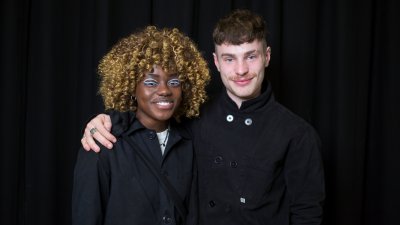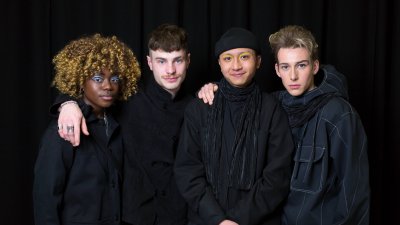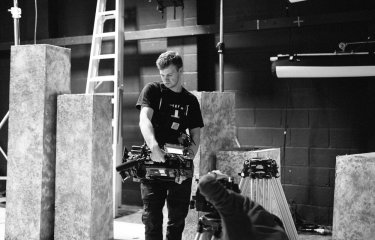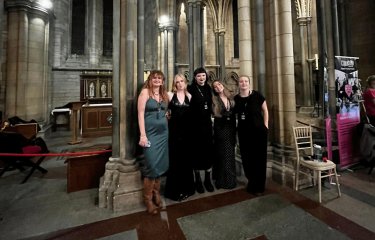Fashion Design student finds a creative home in Falmouth
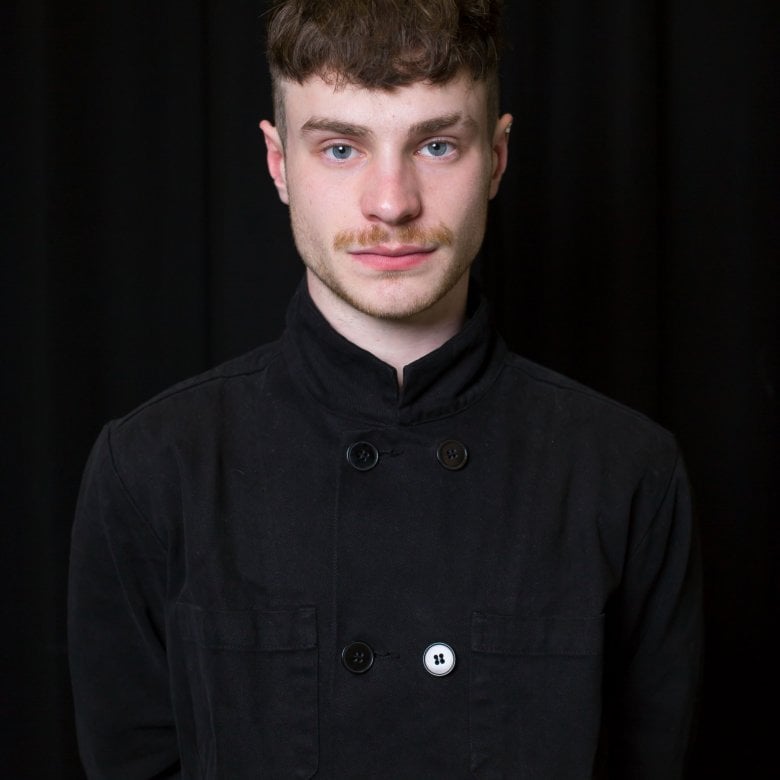
A year into his studies, and BA(Hons) Fashion Design student Tommy Marley was struggling to realise his creative potential.
Living on the top floor of an apartment block in Birmingham wasn’t doing him any favours; the sounds of the city were seeping through his flat windows and proving a significant barrier to his work.
The designer was craving a more peaceful university environment, and made the decision to swap the cityscapes of Birmingham for Falmouth’s serene surroundings. Now just weeks away from graduating, we spoke to Tommy about his university journey; the design influences that shaped his work, the importance of representing his heritage in his clothes and why transferring to Falmouth was one of the best decisions he’s ever made.
“You want to represent yourself within your work.”
Growing up in a working-class household has indelibly shaped the clothes that Tommy has chosen to design at university. From their aesthetic to their practicality, the creative choices he’s made keep coming back to his heritage.
“My grandparents and parents grew up as working class people; they were train drivers and construction workers”, Tommy tells us. “So when I was going through clothing research, I looked at loads of old photography of these sorts of people within that particular environment.
“I remember my supervisor this year was saying that you want to represent yourself within your work. You don’t want to lose that sense of personality within it.”
A book recommendation from that same supervisor also proved to be particularly influential for Tommy; August Sander’s Face of Our Time, a photobook of portraits depicting twentieth century Germans, many of whom were working class citizens. It helped emphasise the importance of designing durable items.
“Looking at what they were wearing and how they wore their clothes, it emphasises longevity”, Tommy explains. “Lots of these people couldn’t afford to buy clothes often. They’re wearing something that is almost like a second skin; it has to last.
“Outside of the book, a really good example is the French workwear jackets. They were being made at the start of the twentieth century, and people are still wearing them now. If you’re lucky, you might spot one in a charity shop.
“Personally, I’d be far more excited to see something I’d designed still being worn in 50 years’ time than contribute to the hyper-consumerism we see nowadays.
“Fashion isn’t about showing off”
Tommy has paired the practical nature of his design choices with a sleek, no-nonsense colour palette of black tones. While the designer acknowledges his choices could be labelled as ‘anti-fashion’ by some, his decision is rooted in avoiding the kind of garish clothing that he’s always swerved.
“I chose black because it feels more modest and muted”, Tommy explains. “A lot of people see it as a kind of unapproachable colour - there’s a bit of a taboo around black clothing.
“But for me, black clothing presents itself as something more tonal. It strips everything down.”
Tommy goes on to explain that Yohji Yamamoto is also a significant inspiration behind his designs. The Japanese fashion icon also favours darker shades in his clothing and has become renowned for his gender fluid clothing; a look through Tommy’s latest shoot reveals that this is another trait that Tommy shares with the Japanese maestro.
“He’s a big inspiration – he has a really rich heritage through design but he’s also so modest and doesn’t put himself on a platform like other people do. I really resonate with his concepts and the ideology behind his creativity.”
“I nearly packed it all in before my final project”
Tommy doesn’t give the impression of someone who struggles with blocks to their creativity. During our conversation he cites inspirations for his work that vary from items in period films to Nick Cave tracks. And yet the designer was close to abandoning his degree entirely when stitching his clothes together for his final collection.
“I just couldn’t get this sleeve to co-operate”, Tommy recalls. “The deadline for the collection was getting closer and closer, and I couldn’t get the stitching to work at all.
“In the end I got so frustrated that I threw my needles and the materials down and walked out of the studio!”
According to Tommy, walking away from the work was probably the best thing he could’ve done. Creativity isn’t an endless commodity that can be drawn from at all times – sometimes you need to distract yourself from the task ahead of you in order to refocus on the work.
“For me, that’s painting and playing the guitar”, Tommy tells us. “It really helps me to reset. You can go into tunnel vision and get stuck on things, which is exactly what was happening during the stitching of that jacket. Walking away and forgetting about it for a day was what enabled me to finish it.”
“Transferring here is one of the best decisions I’ve ever made”
With Tommy just weeks away from graduating from Falmouth, the designer has been reflecting on the creative journey he’s been on since starting university three years ago.
As it happens, his university life started far away from the picturesque surroundings of coastal Falmouth – Tommy had initially enrolled to study Fashion Design in Birmingham, feeling that it was necessary “to be in a city that wasn’t London” for his fashion degree.
But if studying in a city felt important, why not the capital? “I realised that I’d be broke for three years!” Tommy explains. “I’d had friends go there and find it to be too expensive to really do anything, but I still thought that fashion had to be studied in a city.
“I did my first year in Birmingham, but it wasn’t for me. I like to really sit with my ideas and hone in on the little details of project, which isn’t easy when you’re in a flat ten storeys up, with construction going on all around you and sirens blaring throughout the night.
Trading in the sirens for the squawks of south-coast seagulls felt like a good idea – and so it proved. “Transferring here is one of the best decisions I’ve ever made”, Tommy tells us.
“The atmosphere allows you to be a lot more free and creative. You don’t have that chaotic pace of. Life that you get in a city; I much prefer the slower pace of life you get here.”
“The final collection was the amalgamation of everything I learnt”
One of the most satisfying elements of Tommy’s time at university was seeing his work evolve and manifest itself into his final collection.
“I feel like the first two years of university was me feeling out and trying to see what I wanted to do and experiment with different styles and different ways of designing,” Tommy tells us. “And I felt like the final collection was the amalgamation of all that.
“The final collection was free reign; we could pursue any creative direction we wanted. Previous assignments were framed more as briefs, which meant you couldn’t go completely off kilter – which is good, it gets you in the mindset of working in the industry - but with this, I could do literally anything.
“I’m really proud with how it turned out, and excited to see what comes next this summer.”
